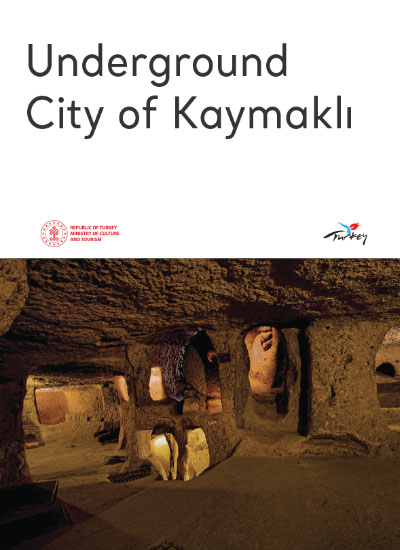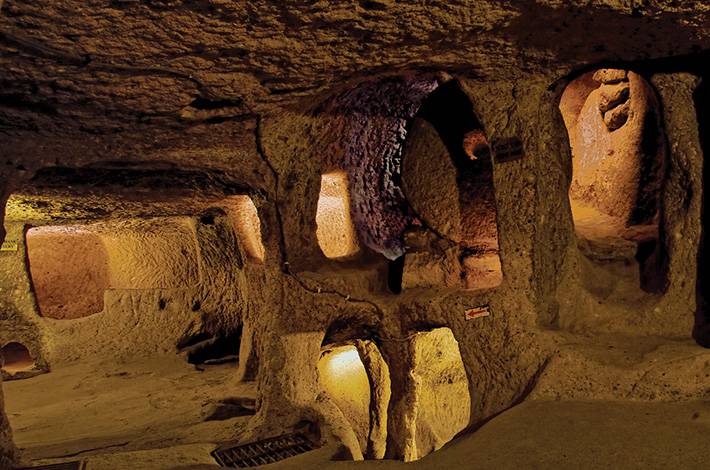Underground Cities in Cappadocia The number of underground cities in the Cappadocia Region is estimated to be between 150 and 200, with varying sizes. The majority of these rock settlements are constructed by carving soft tuff rocks downwards into the ground. The primary objective of their construction was to ensure the security of the inhabitants. The rooms are connected to one another through long galleries and labyrinth-like tunnels. The purpose of constructing low, narrow and long galleries is to restrict the mobility of the enemy. Underground City of Kaymaklı The inhabitants of the village of Kaymaklı, whose ancient name is “Enegüp”, have constructed their homes near 100 or more tunnels of the underground city. Even today, villagers pass through these tunnels and utilise the appropriate places of the underground city as cellars, storerooms and stables. The underground city of Kaymaklı differs from the Derinkuyu in terms of both its plan and its establishment. Its passages are low, narrow and sloping. Currently, four floors have been unearthed, with the spaces concentrated around the ventilation shafts. The first floor of the underground city contains stables, while the second floor houses a single nave and two apses. In front of the apse is an altar, and on the sides there are seating platforms. The most significant areas of the Kaymaklı Underground City are located on the third floor. In addition to numerous storage areas, wineries and kitchens, the block of andesite with relief-texture found on this floor is of particular interest. The stone was not brought here from outside but was part of the andesite layer that was not uncovered during the process of hollowing. A total of 57 holes were carved into the surface of the stone for the purpose of crushing and grinding. Despite the fact that the entirety of the city has not yet been fully uncovered, and that only four floors have been discovered thus far, it is clear that Kaymakli is one of the largest underground settlements in the region. It is accepted as the widest underground city of Cappadocia, among the cities that have been explored. The number of storage rooms in such a limited area lends support to the hypothesis that a considerable number of people resided here.
KAYMAKLI UNDERGROUND CITY





